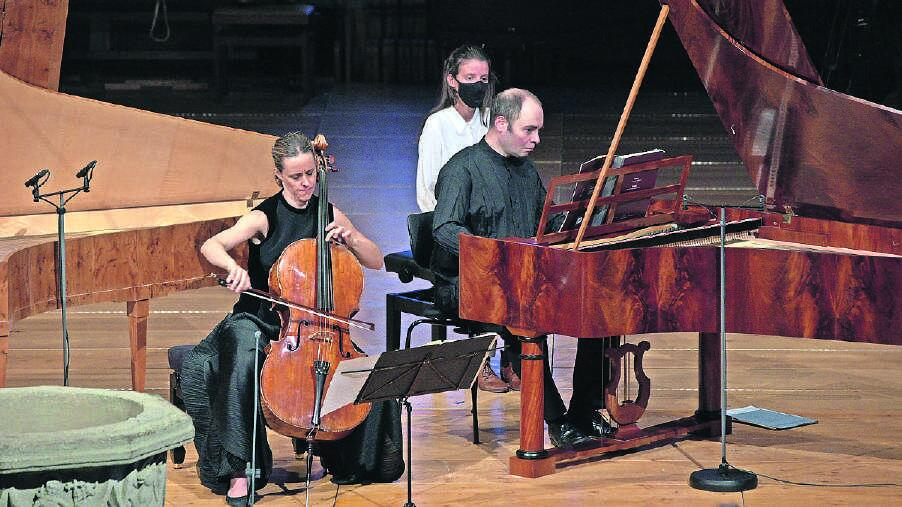Music to forget the world outside
03.09.2020 Arts & CultureThere simply is nothing else of importance when Sol Gabetta and Alexander Melnikov play cello sonatas. The one and a half hours of music at this year's pop-up Menuhin Festival in the Saanen church were pure pleasure – both at the venue or digitally from home.
The two sonatas No. 1 in F major, Op. 5, No.1 and No. 5 in D major, Op. 102, No. 2 for cello and fortepiano by Ludwig van Beethoven offer wonderful possibilities for both instruments to play side by side as well as communicate together. They are temporally and stylistically separated, which was expressed even more audibly in Alexander Melnikov’s piano selection. The Walter fortepiano, on which he played in the first sonata, sounded light and filigreed, at times teasing and at others bubbly and racy.
Melnikov presented all the beauties of classical music, his ornamentation was neatly worked out down to the last detail. He openly shared his joy of playing. The Graf fortepiano, on the other hand, underscored the haunting, shocking quality that seeps through the second sonata in a kind of determined fatefulness typical for Beethoven. The versatile pianist played it warmly and expressively. The Grande Sonate by Ferdinand Ries in G minor, Op. 125, was performed on the same Graf instrument. This grand piano sounded graver and fuller. Vocally, the clear sound of the soprano strings stood out in the first movement. This work by Ludwig van Beethoven’s pupil and companion made for a charming link between the two unequal sonatas by Beethoven. Although some things are reminiscent of the teacher, Ries goes his own way. He shows a wealth of his own musical ideas, whether from the depths or – dancing exuberantly – in impetuous joy.
Room for the instrument
In a recent interview, Sol Gabetta said that the Corona break was actually a good thing for her. It had given her “more room for the instrument”. She was able to work more with the cello without rushing from one appointment to the next. At the same time, an intensification of the fusion between the cellist and her instrument almost seems impossible.
She gave herself completely over to the Stradivarius Suggia from 1717, made available by the Stradivarius Foundation Habisreutinger, which she set up for the programme in the church of Saanen in historical tuning (430Hz) and with gut strings.
It was a concert of pure pleasure, a moment to forget everything else. With an encore of Mendelssohn's Lied ohne Worte, Op. 109, the evening came to a worthy, quiet end.
It is is a bit of a pity that the audience did not follow the instructions to refrain from bravos. Also, the loud trampling rather belongs into a football stadium than the magnificent church atmosphere. After all, getting up would also be a way of expressing thanks and reverence.
BASED ON AVS/LOTTE BRENNER
See interview with Sol Gabetta




